…Continued
March 29, 2010
A big, sturdy Land Rover is waiting for me at the door. It is a kind of car that bodes well for things to come and unleashes emotions suited to the moment – a car which is at the heart of my exciting journey ahead. A car that National Geographic channel relies upon to ferry their personnel, a car that hums and roars over dirt tracks and occasionally serves as the resting spot for the fearless cheetah or lion in the wild. My Land Rover is sports a green colour, making it environmental friendly.
The roof is down but that is easily fixed by pushing a button. It is built to accommodate four, including baggage, food stuff, tents and such like.
However, I am alone on this safari. It is my gift to myself for scaling Mt Kilimanjaro.
“It’s a beautiful car Reuben, I love it.” Reuben is my driver-guide for the next week or so – or however long it takes to complete the Northern Circuit that starts at Arusha.
“Asante Ms Anjaly. It is a good car. Very good for safari, especially when it rains. You will see. Let’s go now.”
I cast a long look at the hotel, wave to the security guard and climb in.
We make our exit quickly. The grocery shopping is done in a typically African manner. First, we buy one item at one store, and then go to another store to buy a different item.
In this way, I see all the food that I am going to eat.
Arusha is rising from its slumber as we make our getaway. The weather is still gloomy when we leave Arusha to spend five days in the bush.
Our destination is Tarangire National Park or TNP about one hundred and sixty kilometers away.
Rural Tanzania is green, the sight of which makes my heart soar. It is not just green, it is lively green, the kind that inspires health freaks or health propagators and the moment is so wrought with these thoughts I want to run through the tall green grass and nibble on the tender shoots and chase butterflies alongside the herd of happy black cows.
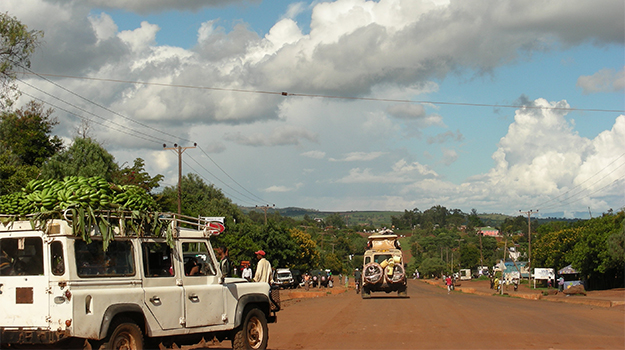
The scenery starts to change and we’re now driving through an undulating landscape. The car has no trouble negotiating the roads. Red dust cling the tall bushes by the side of the road despite the frequent rain.
We are nearly at the park when we have a road surprise – a flat tire. But fate is on our side because not fifty feet from where we stall, there is a small settlement and as we stand inspecting the tire, ninety nine percent of the settlers approach us like a swarm of locusts descending on a Russian farm.
Reuben looks worriedly at the crowd.
“I fix it. Hakuna matata. You stay inside Miss. People are coming, you stay inside. Close the windows please.”
“Let me help you,” I say instead, not fully comprehending the reason behind Reuben’s worry.
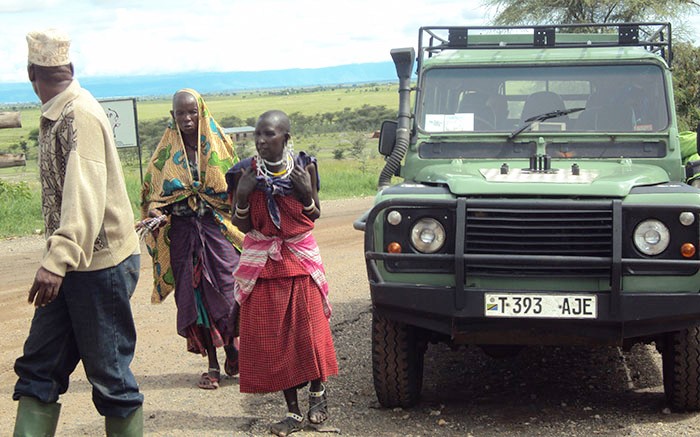
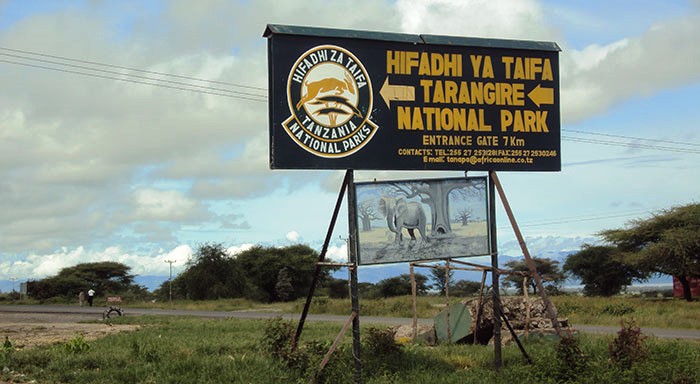
Reuben has by this time produced a jack and with it points towards the growing crowd. I see the point he is trying to make. I watch as the trickle of human bodies swell to a flood of little black bodies in tattered clothing, brandishing everything from chunks of fried meat to bead jewellery and Maasai shawls and corn.
I am intrigued.
“Get inside Miss. Please. Close the windows.”
I scramble in, pull up the windows and empty out my pockets. Then pulling out my small digital camera I slide out of the car closing the door behind me.
I have stepped into an ocean of wriggling bodies.
“Mzungu, mzungu” is all I hear over the garble of voices. I don’t have to look at what they are trying to sell me, I smell it. I shake my head at every one, smile and point my camera.
Tarangire National Park, Tanzania
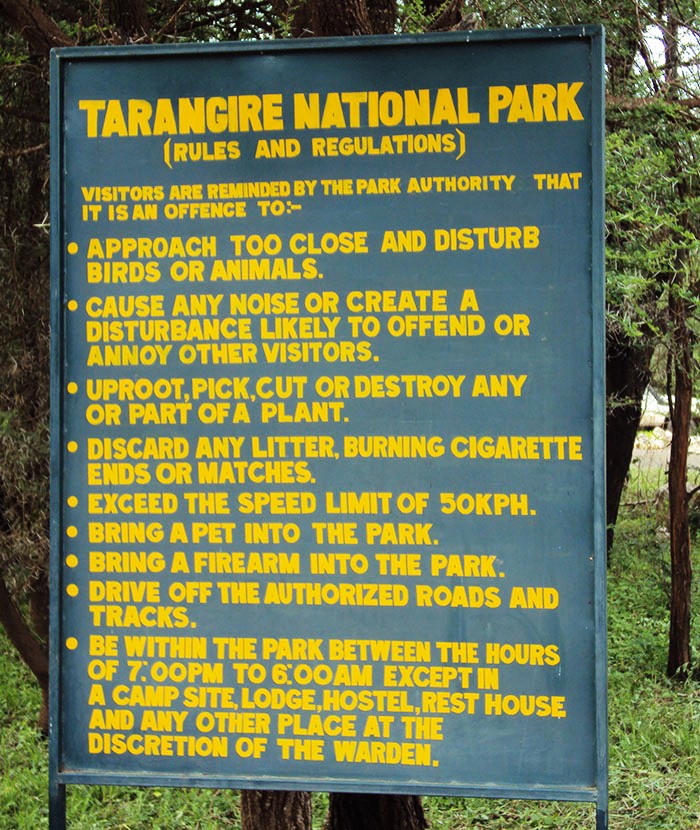
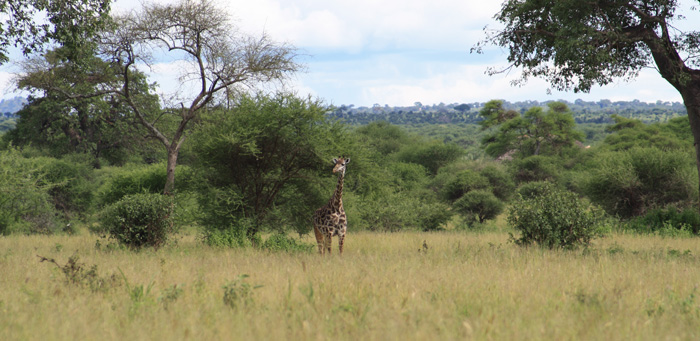
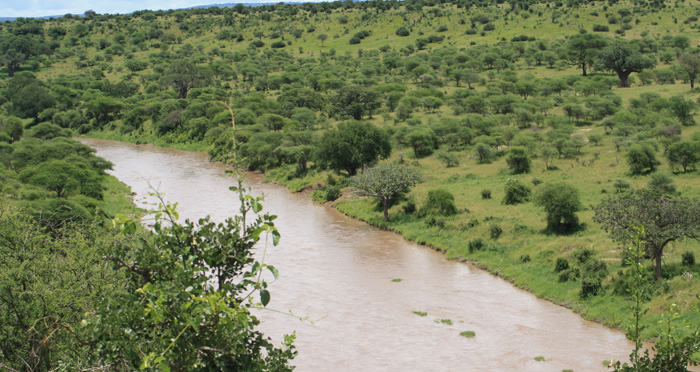
Tarangire National Park is an easy park to negotiate, comprising mostly of rolling grasslands and occasional outburst of trees which the giraffes find interesting. I stick my neck out trying to bring a giraffe into focus. My eyes travel from somewhere at its feet to the top of its head in admiration. I have never seen a giraffe before. But then, I haven’t seen these many elephants or Thomson’s gazelles in one place before either. I also spot a baobab tree, another first for me. There are many scattered around the park. It is strange how a tree suddenly becomes so attractive. I only know this tree as Rafiki the Monkey’s tree from the film The Lion King.
Every part of the tree is valuable, Reuben tells me. “You can make ropes and clothes from it and also its seeds – you can make many type of cosmetics. In summer, elephants eat the skin of the tree because it has water. Our African women use baobab for their beautiful skin.”
The grass is tall. We drive around, change tracks and surprise gazelles out for a graze. I am not sure what to expect from a safari, but it doesn’t feel like this. There is no wild frenzied racing after other cars to sight lions or escape a charging elephant. It is peaceful, like home. I feel as if I am born for this life. To wake up and greet the spectacular savannah and its inhabitants every morning and gaze at the pale sun through the trees and watch the slow progress of giant tortoises across the tracks would be a thing I’d enjoy.
In the distance, we see the muddy River Tarangire snake through the silent green landscape. A lone ostrich occasionally appears into this picture. I stop taking photographs at once. I want remember this not as a picture but as a feeling.
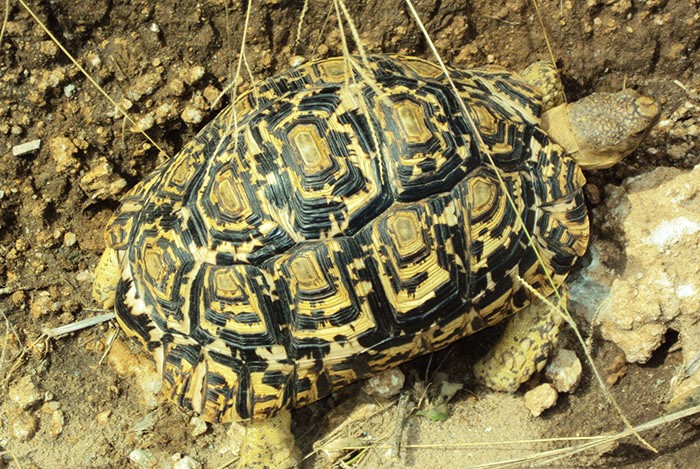
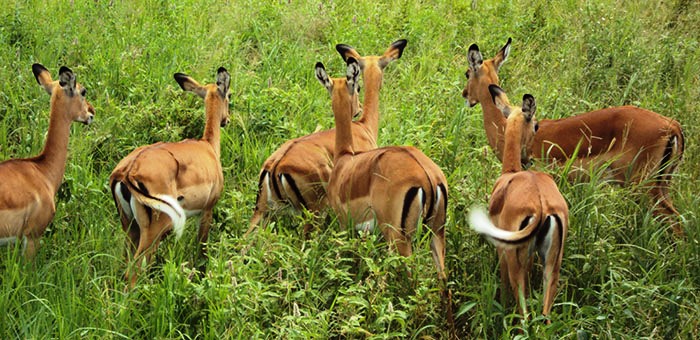
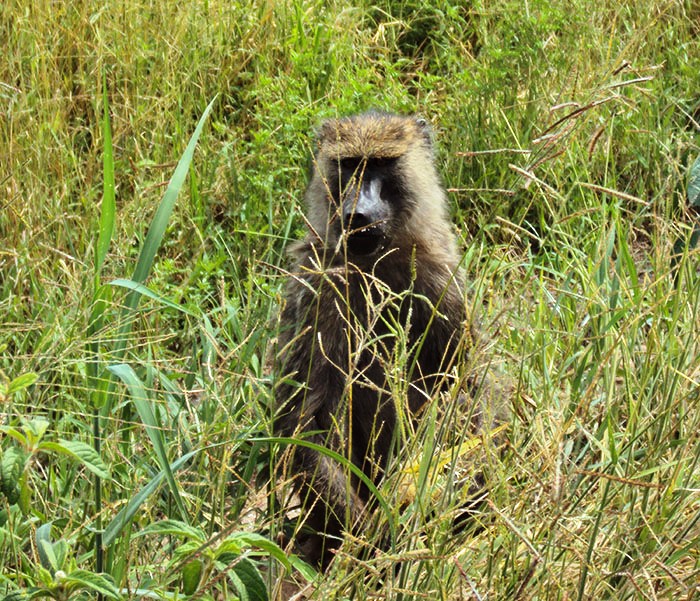
Tarangire National Park, Reuben explains has the highest density of elephants in North Tanzania. “You can see them every time. You don’t wait for any season. They are always here.”
No. There are no lions here, he says in answer to my question.
We are as fortunate in spotting wildlife as we are in the views that we see. Of course, we see giraffe and gazelles and a large group of elephants which is divided over both sides of the track we are on. To the left of the road, two young males test their strength in order to establish their place in the group. They fence with their trunks and push each other back for minutes. To the right, a very small elephant is walking toward us.
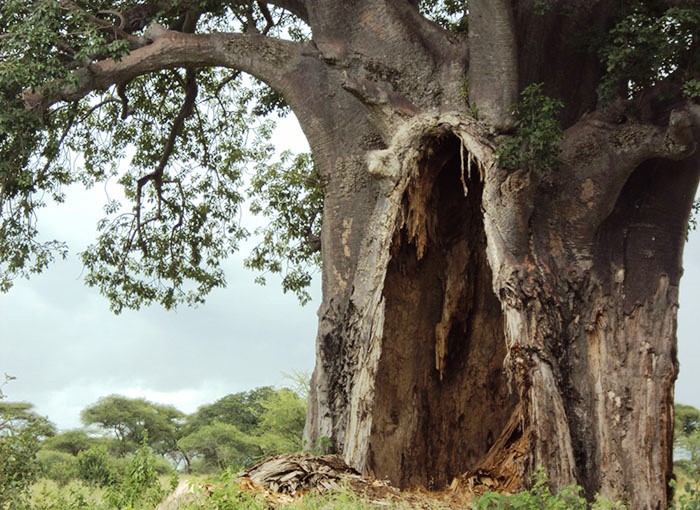
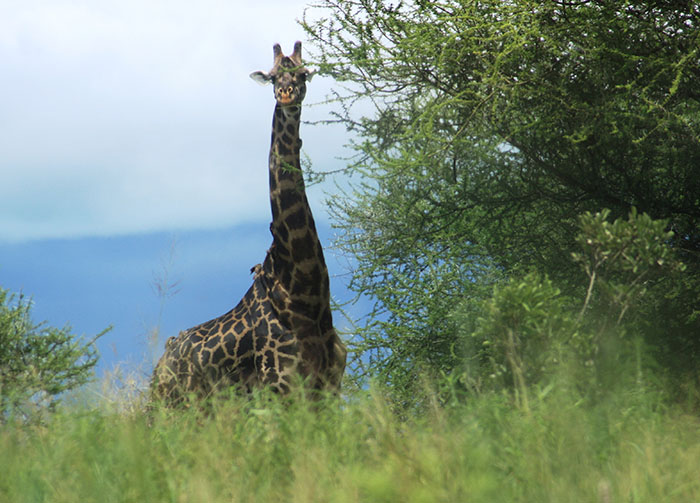
This is a sign that we have to move the car back. The biggest elephant of the group crosses the road in front of us and quietly starts to eat acacia leaves. We wait until we can drive on, because we have to drive through both sub groups if we start moving.
A sight as thrilling as what we have just seen made me hungry. I don’t know the correlation between adrenaline rush and hunger, but there is something to it. We proceed to the designated lunch spot. It’s nice and cool in the shade. We bring out our lunch and sit at the table. There is no one here but for a few friendly birds hovering around for tit-bits. I crumble my dry bun and scatter it around watching them descend on it with gusto. There is some enmity between the species but there is enough for everyone. Reuben tells me we cannot stay long, because given the season there is every chance that we could be targets for bees and tsetse flies.
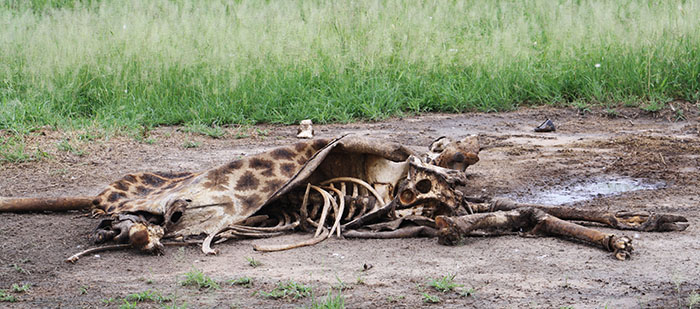
We continue our tour of TNP. It is exhilarating. Out in the middle of nowhere, life has taken on a different meaning.
| In the year 1933 and 1934 – nearly ninety-four years ago, Ernest Hemingway and his wife Pauline set up camp amid fig trees and giant mahogany forests on the banks of Lake Manyara and tracked kudu, a local antelope, in the Tarangire National Park. |
I am yet to see a kudu but it looks as though I am will miss seeing it altogether because Reuben suggests going to Lake Manyara National Park.
“If you are lucky, you will see the lions of Manyara. They are different, not like the other lions. You will see them only on the tree.”
I agree to abandon kudu-sighting for the sake of spotting the tree climbing lions of Lake Manyara.


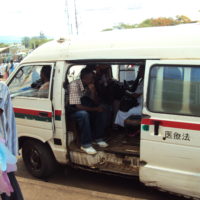
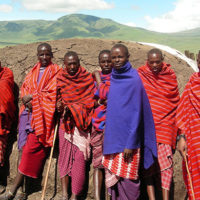
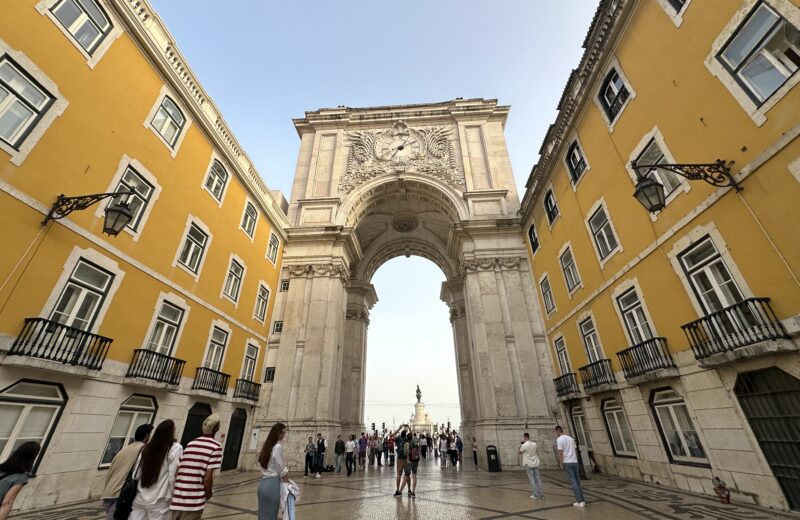
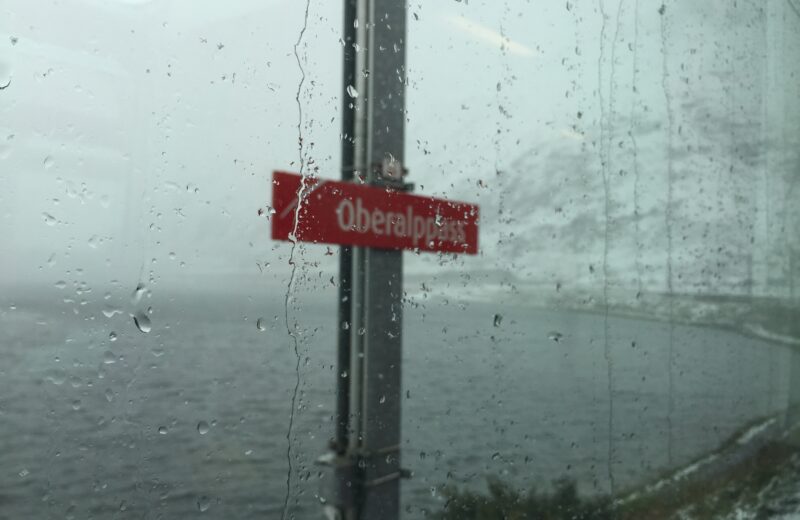
[…] Masai people (also Masaai) are semi-nomadic and found in Eastern Africa – namely Kenya and Tanzania. […]